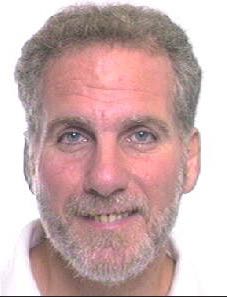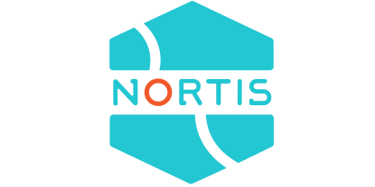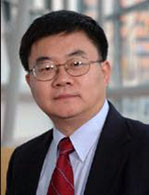Other Track AgendasOrgan-on-a-Chip and Body-on-a-Chip: In Vitro Systems Mimicking In Vivo Functions | Organs-on-Chips and 3D-Cultures: Technologies and Approaches |

Thursday, 7 July 201608:00 | Conference Registration, Materials Pick- and Continental Breakfast in the Exhibit Hall | |
Session Title: Opening Plenary Session |
| | 09:00 |  | Keynote Presentation Organ-on-a-Chip Technologies: Advances and Challenges
Martin Yarmush, Founding Director of the Center for Engineering in Medicine, Massachusetts General Hospital and Harvard Medical School, United States of America
|
| 09:30 |  | Keynote Presentation Move Over, Mice -- How the Fusion of Systems Biology with Organs on Chips May Humanize Drug Development
Linda Griffith, Professor, Massachusetts Institute of Technology (MIT), United States of America
“Mice are not little people” – a refrain becoming louder as the
strengths and weaknesses of rodent models of human physiology and
disease become more apparent. At the same time, three emerging
approaches are headed toward integration: powerful systems biology
analysis of intra- and inter-cellular signaling networks in patient
samples; 3D tissue engineered models of human organ systems, often made
from stem cells; and microfluidic devices that enable living systems to
be sustained and used for models like cancer metastasis. This talk will
highlight the integration of these rapidly moving fields to understand
difficult clinical problems, and will especially highlight intellectual
and technical challenges in transitioning “organs on chips” platforms
from academic publications into practical use. |
| 10:00 |  | Keynote Presentation Creating Vascularized Tissue Constructs in Microfluidic Assays
Roger Kamm, Cecil and Ida Green Distinguished Professor of Biological and Mechanical Engineering, Massachusetts Institute of Technology (MIT), United States of America
Vascularization is critical to most tissues, yet developing a perfusable microvascular network within an on-chip tissue construct has proved challenging. Several approaches have been developed in recent years including the casting of networks within a hydrogel matrix that can subsequently be lined with vascular cells, and the growth of networks from cells seeded either on the surface of a hydrogel by angiogenesis, or from cells suspended in gel by a process akin to vasculogenesis. Our previous work has followed the second path in producing networks within microfluidic platforms that can be perfused within several days of seeding. These networks can be grown in various matrices either in co-culture with other cell types such as fibroblasts, myoblasts or osteoblasts, or in isolation. To date, the best results have been obtained by co-culture with normal lung fibroblasts in separate gel regions, using a fibrin-based extracellular matrix. Recently, these systems have been scaled up to mm-sized regions and the fibroblasts are co-seeded with the endothelial cells, leading to vascularized and perfusable networks that are perfusable for three weeks with potential applications for in vitro organ-on-chip systems. |
| 10:30 | Coffee Break and Networking in the Exhibit Hall | 11:15 |  | Keynote Presentation Organs-On-Chips for Advancing Drug Development and Personal Health
Geraldine A Hamilton, President/Chief Scientific Officer, Emulate Inc, United States of America
This talk discusses emulating living human biology to understand how
different diseases, medicines, chemicals and foods affect human health.
These systems are being used to advance product innovation, design and
safety across a range of applications - including drug development,
agriculture, cosmetics, chemical-based products and personalized health. |
| 11:45 |  | Keynote Presentation Using Human “Body-on-a-Chip” Devices to Aid Drug Development
Michael Shuler, Samuel B. Eckert Professor of Engineering, Cornell University, President Hesperos, Inc., United States of America
Effective human surrogates constructed from a combination of human tissue engineered constructs, microfabricated devices, and PBPK (physiologically based pharmacokinetic) models offer a potential alternative or supplement to animal studies to make better decisions on which drug candidates to move into clinical trials. These systems have been called microphysiological systems. We have constructed “pumpless” systems that provide a low cost, relatively simple-to-use platform to evaluate potential drugs for human response. In addition to measuring viability and metabolic responses, we can measure functional outputs such as electrical activity and force generation (in collaboration with J. Hickman, University of Central Florida). We will focus our discussion on development of key organ modules and their integration into a model of the whole body. |
| 12:15 |  | Keynote Presentation Microengineered Systems for Recapitulating Intestinal Function
Nancy Allbritton, Frank and Julie Jungers Dean of the College of Engineering and Professor of Bioengineering, University of Washington in Seattle, United States of America
Technical advances are making it possible to create tissue
microenvironments on platforms that are compatible with high-content
screening strategies. We have developed a microfabricated device to
enable culture of organized cellular structures possessing much of the
complexity and function of intact intestinal tissue. Single stem cells
or crypts isolated from primary mouse intestine grow and persist
indefinitely as organotypic structures containing all of the expected
lineages of the intestinal epithelium. Our microengineered arrays and
fluidic devices allow prolonged culture and experimental manipulation of
these intestine-on-chip systems. Millimeter-scale primary intestinal
epithelium can be formed closely mimicking the polarized 3D in vivo
microarchitecture of primary tissue. These systems can also be
interrogated by a variety of techniques including fluorescence,
immunohistochemistry and genetic analyses. The bioanalytical platforms
are envisioned as next generation systems for high-throughput assays of
drug- and toxin-interactions with the intestinal epithelia. |
| 12:45 | Networking Lunch, Discussions with Exhibitors and View Posters | |
Session Title: Technologies and Approaches for Constructing Organs-on-Chips and 3D-Cultures |
| | 14:00 | Reality check – Industrial Development of Organ-on-a-Chip Systems
Holger Becker, Chief Scientific Officer, Microfluidic ChipShop GmbH, Germany
While in recent years the number of academic publications concerning organ-on-a-chip devices has skyrocketed, the transfer of such approach into commercial products faces a variety of specific challenges. The first challenge usually lies in the material selection. Novel materials such as elastomeric thermoplastics materials allow a scale-up in manufacturing while having physical properties closer to the frequently used elastomers in academia. In many applications, specific surface functionalization steps are required for cell adhesion. Again, the scalability and cost are relevant parameters. Finally, further back-end processing steps such as assembly and integration complement the process chain. We will present examples for scalable manufacturing technologies in cell-based devices and discuss hurdles and barriers for commercialization. | 14:30 | Supporting Angiogenic Development in Organ Printing
William G Whitford, Life Science Strategic Solutions Leader, DPS Group, United States of America
Michael Golway, President & CEO, Advanced Solutions, Inc., United States of America
Larger tissues require angiogenic development for successful in vivo grafting. Development of functional vascularization requires optimized cell preparation, printing technologies, bioinks and maturation procedures. | 15:00 | Microfluidic Flowcell Systems and Platform Technologies as Versatile Carriers and Interfacing Solutions for Organ-on-a-Chip Applications
Herman Blok, Business Development Manager, Micronit Microtechnologies, Netherlands
An overview will be given of developed microfluidic platform technology
and interfacing solutions for a number of Organ-on-a-Chip (OOC)
applications. As the scope and diversity of OOC and 3D-bioprinting
applications is growing rapidly there is a need for consolidation and
standardization in the control, containment and interfacing solutions
for microfluidic chips and devices. We have developed various scalable
Design-For-Manufacturability (DFM) concepts for such OOC applications,
varying from resealable devices to fully integrated microtiter plate
format culturing tools. The concepts are tested and validated in the
field by end-users. Here, we demonstrate their use and applicability as
versatile, flexible and enabling R&D tools for prototyping and
(further) development of OOC applications. | 15:30 | A Benchtop Microfluidic Culture Platform for Culturing Tissue with Live Imaging Under Physiological Flow Conditions On a Laboratory Bench
Thomas Corso, Chief Technical Officer, CorSolutions, United States of America
To date, tissue culture with live imaging under physiological flow conditions is challenging. To address these difficulties CorSolutions has developed a Benchtop Microfluidic Culture Platform for studying tissue culture under physiologically relevant conditions outside of an incubator. This flexible, universal platform incorporates fluidic interconnects, pulse-free fluid delivery pumps, and optics to offer a simple alternative to the conventional incubator. The Benchtop Microfluidic Culture Platform can interface a variety of microfluidic devices to the macro world. To evaluate the platform, perfused microvessels consisting of human umbilical cord vascular endothelial cells, expressing green fluorescent protein, were cultured. The approach allowed for live cell imaging while subjecting the culture to the physiological shear stress of 15 dynes/cm2, throughout the 3 day experiment. The results showed an unexpected active migration of cells both with and against the flow, including traversal of the branching channels, and their eventual alignment and polarization in the direction of flow. The live imaging revealed cell behavior that had never before been observed as endothelial cells had been believed to be quiescent, undergoing mitosis only once every one to two years. Although the implications of the observed cell migrations are not yet known, it is clear that the Benchtop Microfluidic Culture Platform is a tool with tremendous potential for probing cellular behavior. | 16:00 | Standard Tools for Biology
Danny Cabrera, CEO, Biobots Inc, United States of America
Biology is the most sophisticated manufacturing technology that we know of. If we could control life, we could cure disease, eliminate the organ waiting list, revert climate change and push life to other planets. However, our ability to engineer living systems has been restricted by the lack of standard tools that exist for manipulating biology. BioBots is addressing this need by creating a standard suite of digital biofabrication tools. Together with our partners and clients, we are blending biology with robotics and software to re-imagine the modern laboratory and push the human race forward. | 16:30 | Coffee Break and Networking | 17:00 | Panel Discussion Focusing on Challenges and Opportunities in the Organs-on-Chip Space Moderated by Dr. David Hughes, CN Bio Innovations Ltd.
| 18:00 | Networking Cocktail Reception for All Delegates, Speakers, Sponsors and Exhibitors: Enjoy Beer, Wine, Appetizers and a View of the Charles River and Boston from the 15th Floor Conference Center | 19:30 | Close of Day 1 of the Conference |
Friday, 8 July 201607:30 | Morning Coffee, Breakfast Pastries, and Networking | |
Session Title: Deriving Value from Organs-on-Chips and 3D-Cultures |
| | 08:00 | Digital Magnetophoresis for Rare Cell Collection and their Logical Manipulation
Cheolgi Kim, Professor, Daegu Gyeongbuk Institute of Science and Technology (DGIST), Korea South
The ability to manipulate individual cells has profound applications for gene sequencing, single cell analysis for their heterogeneity based on cell separation technology. Even though, various single cell platforms are exit, it is still challenge to collect rare cells and their digital manipulation in large-scale. Here, we demonstrate a class of integrated magnetic track circuits for executing sequential and parallel, timed operations on an ensemble of single particles and cells. The magnetic tracks are fabricated by lithographic technology. These magnetic tracks used for the passive control of cells/particles similar to electrical conductor, diodes and capacitor. When the magnetic tracks are combined into arrays and driven by rotating magnetic field, the single cells are precisely control for multiplexed analysis. In addition, the concentric cell translocation and separation were performed by the assembly of this magnetic track into a novel architecture, resembled with spider web network, where all the cells are concentrated into one position and then transported to apartments for the single cell analysis. | 08:30 | Raman Imaging and Beat Profiling of the Pharmacological Reaction of Neonatal Rat Cardiomyocytes in a Centrifugal Microfluidic Chip
Wilfred Espulgar, Research Fellow, Osaka University, Japan
Raman images and beat profiles of neonatal rat cardiomyocytes trapped in a centrifugal microfluidic chip applied for pharmacological reaction study. | 09:00 | Inflammation on a Chip
Daniel Irimia, Associate Professor, Surgery Department, Massachusetts General Hospital (MGH), Shriners Burns Hospital, and Harvard Medical School, United States of America
| 09:30 |  Technology Spotlight: Technology Spotlight:
Tissue Engineered Vascularized Tumor Micro-environments for Preclinical Testing of Anticancer Therapeutics and Toxicology
Henning Mann, Senior Research Scientist, Nortis, Inc.
Nortis provides microfluidic chips for tissue engineering 3D-vascularized tissue micro-environments. Endothelial vessels induced to sprout in response to growth factors create a vascular network that invades tumor tissue. The model can be used to test anticancer therapeutics but can also be applied to the generation of organ-specific vascular and tissue micro-environments.
| 10:00 |  Technology Spotlight: Technology Spotlight:
3D Printing in Biocompatible Polymers
Richard Gray, Regional Director, Blacktrace, Inc.
3D printers must overcome two significant challenges to address applications in Life Science – first, being able to print using biocompatible FDA approved materials, and second, being able to print leak-proof microfluidic channels and structures. This presentation describes development of Dolomite’s Fluidic Factory, which can print fluidically sealed parts in COC in minutes. Key product technologies will be described, and examples of applications in life sciences will be given.
| 10:30 | Coffee Break and Networking in the Exhibit Hall | 11:00 |  | Keynote Presentation Integration of Cells with Silicon Devices for the Development of Functional Organ-on-a-Chip Systems for Preclinical Drug Discovery and Toxicology
James Hickman, Professor, Nanoscience Technology, Chemistry, Biomolecular Science and Electrical Engineering, University of Central Florida; Chief Scientist, Hesperos, United States of America
One of the primary limitations in drug discovery and toxicology research is the lack of good model systems between the single cell level and animal or human systems. In addition, with the banning of animals for toxicology testing in the EU, the development of body-on-a-chip systems to replace animals with human mimics is essential for product development and safety testing. Our research focus is on the establishment of functional in vitro systems to address this deficit where we seek to create organ mimics and their subsystems to model motor control, muscle function, myelination and cognitive function, as well as cardiac conduction and force generation. The idea is to integrate microsystems fabrication technology and surface modifications with protein and cellular components, for initiating and maintaining self-assembly and growth into biologically, mechanically and electronically interactive functional multi-component systems in a circulating serum-free medium. Our philosophy is to start with 2D systems and only add complexity as needed to address biological questions to keep cost of the system at a minimum. We are using this ability to manipulate biological systems and integrate them with silicon-based systems to create body-on-a-chip systems for high content drug discovery. Examples will be given of some of the more advanced body-on-a-chip systems including a recent 4-organ system, neuromuscular junction system, and integrated cancer subsystems that are being developed as well as the results of five workshops held at NIH to explore what is needed for validation and qualification of these platforms. |
| 11:30 |  | Keynote Presentation Multi-Organ-Chip Developments: Towards a Paradigm Shift in Drug Development
Reyk Horland, CEO, TissUse GmbH, Germany
Present in vitro and animal tests for drug development do not reliable predict the human outcomes of tested drugs or substances because they are failing to emulate the organ complexity of the human body, leading to high attrition rates in clinical studies. Here, Multi-Organ-Chips provide high potential for the in vitro combination of different cell types and organoids to realize a better understanding of their physiological in vivo crosstalk. The expectation is that such tests would predict, for example, toxicity, immunogenicity, ADME profiles and efficacy in vitro, reducing and replacing laboratory animal testing and streamlining human clinical trials. The ultimate aim for microphysiological systems in drug development is to recapitulate the various stages of a disease and even understand the stages before the disease is clinically manifested, which may open the way for new treatment paradigms. This talk will present examples of current Multi-Organ combinations and how the advanced knowledge and experience acquired will eventually enable the development of a Body-on-a-chip system. In addition, the question of how to qualify and validate these systems will be addressed. |
| 12:00 | Advanced Integrated Optical Oxygen and pH Sensors for Organ-on-Chip Applications
Torsten Mayr, Associate Professor, Leader-Applied Sensors, Graz University of Technology Austria, Austria
Integrated optical oxygen and pH sensors are presented enabling
monitoring of oxygen content and pH changes in microfluidic cell
cultures or organ on chips with a high precision read-out. | 12:30 | Networking Lunch in the Exhibit Hall: Visit Exhibitors and Poster Viewing | |
Session Title: Emerging Technologies Session |
| | 13:30 |  | Keynote Presentation Bioprinting 3D Tissues on Perfusable Chips
Jennifer Lewis, Professor, Harvard University School of Engineering and Applied Sciences, United States of America
The advancement of tissue and, ultimately, organ engineering requires the ability to pattern human tissues composed of cells, extracellular matrix, and vasculature with controlled microenvironments that can be sustained over prolonged time periods. To date, bioprinting methods have yielded thin tissues that only survive for short durations. To improve their physiological relevance, we report a method for bioprinting 3D tissues on perfusable chips. Specifically, we will describe the bioprinting of thick vascularized, stem-cell laden tissues that can be controllably perfused and differentiated along an osteogenic lineage on chip. We will then describe how this approach can be extended to create other functional tissue constructs, such as 3D proximal tubules, on chip for drug screening. Our approach combines bioprinting, 3D cell culture, and tissue-on-chip concepts opening new avenues for drug screening, disease models, and ultimately tissue repair and regeneration. |
| 14:00 |  | Keynote Presentation Bioprinting In vitro Tissue Models: Challenges and Opportunities
Wei Sun, National “Thousand-Talent” Distinguished Professor, Tsinghua University; Albert Soffa Chair Professor, Drexel University, China
3D Bio-Printing uses cells, biologics and/or biomaterials as building block to fabricate personalized 3D structures or functional in vitro biological models for regenerative medicine, disease study and drug discovery. This presentation will review some recent advances on 3D Bioprinting. Applications of using bioprinting technology for fabrication of tissue engineering model, drug testing model and cancer tumor model will be given, along with discussions for challenges and opportunities in the field of Bio-3D Printing. |
| 14:30 | Combining Microtissue Spheroids and Integrated Microfluidic Technology for Parallelized Micro-physiological Systems
Olivier Frey, Vice President Technologies and Platforms, InSphero AG, Switzerland
The presentation will focus on recent developments and experimental results combining spherical microtissues with integrated microfluidic technology for creating microphysiological multi-tissue systems. I will highlight, why spheroids as a 3D cell culturing model are suitable for such application and how we implemented their integration into microfludic culturing systems for automated parallelized assays bearing high flexibility in application, robustness and usability. Further, the implementation of microsensors and pumps will be presented and discussed. | 15:00 | Reconstitution and Visualization of Tumors-on-Chip for Precision Medicine
Maria Carla Parrini, Senior Research Engineer, Institut Curie, France
Tumor microenvironments are ecosystems composed of a variety of cell types positioned in complex physicochemical contexts. We generated microfluidic devices in which highly-controlled cell co-cultures reconstituted a breast tumor ecosystem (Her2+ sub-type), containing cancer cells, cancer-associated fibroblasts, endothelial cells, and immune cells. We succeeded in recapitulating on these tumors-on-chip the immune-dependent systemic response to a drug used in clinic, the Trastuzumab monoclonal antibody (Herceptin®). This approach provides a novel experimental system to understand the complex effects of Trastuzumab on the tumor microenvironment and, very importantly, to investigate its resistance mechanisms. We are currently working toward the personalization of these tumors-on-chip by the introduction of patient-derived cells in the perspective of personalized diagnostic and precision medicine. | 15:30 | Human Disease Model to Study Vascular Healing of Coronary Arteries
Volkert van Steijn, Assistant Professor, Delft University of Technology, Netherlands
Cardiovascular disease, the leading cause of death in the world, is often treated by drug eluting stents (DES) to re-open blocked arteries. However, stents damage the artery wall leading to scar formation and delayed healing. Goal: To develop an in vitro model of diseased arterial wall allowing serial and longitudinal in vitro screening of new treatment modalities. Approach: The device consists of two parallel microfluidic channels separated by a thin porous polymeric membrane. Endothelium is grown on one side and smooth muscle cells contralateral. Once the endothelium is confluent and the thickness of the smooth muscle cell layer resembles a thin fibrous cap (65 micrometer), a wound is created by laser ablation and DES treatment is mimicked. Then, using time-lapse confocal microscopy, endothelial and smooth muscle cell responses are revealed. Results: A thorough analysis is presented on the development of the fibrous cap inside the microfluidic device and it is shown how the thickness of the smooth muscle layer increases in time over a period of 28 days. Then, it is shown how to create a wound of controlled size and shape in the endothelium and how the endothelial and smooth muscle cells repair the wounded area. | 16:00 | Close of Track |
|

 Add to Calendar ▼2016-07-07 00:00:002016-07-08 00:00:00Europe/LondonOrgans-on-Chips and 3D-Cultures: Technologies and ApproachesSELECTBIOenquiries@selectbiosciences.com
Add to Calendar ▼2016-07-07 00:00:002016-07-08 00:00:00Europe/LondonOrgans-on-Chips and 3D-Cultures: Technologies and ApproachesSELECTBIOenquiries@selectbiosciences.com